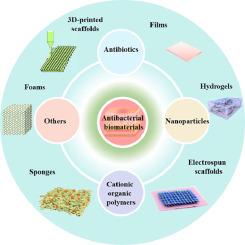The global biomaterial wound dressing market experienced an impressive valuation of USD 438.1 million in 2022. This surge can be attributed to the escalating awareness about the manifold benefits biomaterial wound dressings offer. As predictions go, the market is on an upward trajectory, projected to grow at a CAGR of 9.54% from 2023 to 2031. By the end of this period, the market cap could very well touch an astounding USD 991.5 million.
Overview
The biomaterial wound dressing market revolves around products designed to promote wound healing and protection. With an increasing number of surgeries, chronic diseases, and the constant quest for improved medical procedures, the demand for superior wound dressing solutions is paramount. Biomaterials, in this context, are organic or synthetic materials used in dressing to expedite the healing process. As the global health sector evolves, so does the need for advanced wound dressing materials, making the biomaterial sector a significant player in the medical field.
Components of Biomaterial Wound Dressing Market
Biomaterial wound dressings consist of natural or synthetic components. Natural components like collagen, alginate, and hyaluronic acid possess intrinsic healing properties. They not only provide a moist environment conducive for healing but also aid in cell growth and migration. On the other hand, synthetic components like hydrocolloids, silicones, and foams are engineered to offer specific benefits like absorption, waterproofing, or antibacterial properties. The combination of these components results in dressings tailored for varying wound types and healing stages.
Market Segmentation
The biomaterial wound dressing market can be dissected into several segments:
- By Material Type: This includes natural components (collagen, alginate, etc.) and synthetic components (hydrocolloids, foams).
- By Wound Type: Segmented into acute wounds (surgical & traumatic) and chronic wounds (ulcers, burns).
- By End User: Hospitals, clinics, home care, etc.
Each segment plays a pivotal role in shaping the market dynamics. For instance, the rise in surgeries boosts the acute wounds segment, whereas an aging global population might drive the chronic wound segment.
Market Scope and Size
As highlighted, the market, valued at USD 438.1 million in 2022, is poised for exponential growth. With its tentacles spreading globally, it encompasses both developed and developing countries, driven by technological advancements and healthcare improvements.
Insights
Advanced biomaterial dressings are being welcomed, especially in regions with heightened healthcare infrastructure. Research indicates a preference for dressings that not only heal but also minimize scarring and infection.
Benefits and Applications
Biomaterial wound dressings are revolutionizing wound care. Their benefits range from accelerated healing, reduced infection risk, to minimized scarring. Their applications are vast – from post-operative wound care, burn injuries, to diabetic foot ulcers. As healthcare providers become more discerning, the choice of wound dressing becomes pivotal in patient recovery.
Factors Driving
Several factors propel the market forward. Aging populations with chronic ailments, a spike in surgeries, heightened awareness about wound care, and technological advancements all converge to foster market growth.
Challenges and Barriers
Like any market, challenges persist. High costs, lack of awareness in some regions, and the hesitancy towards adopting new technologies are barriers. Furthermore, the need for rigorous clinical trials for new products can delay market entry.
Market Opportunities and Future Outlook
The future looks promising. With continuous research, the emergence of more innovative dressings is on the horizon. Growing healthcare infrastructure in developing nations offers a ripe market. Furthermore, patient education will open more avenues for advanced dressing adoption.
Key Trends of Biomaterial Wound Dressing Market
A noticeable trend is the shift towards organic components due to their innate healing properties. Additionally, with technology interwoven, we see dressings that can monitor wound pH, moisture levels, and even deliver medication.
Biomaterial Wound Dressing Market Analysis
The market’s robust growth trajectory is undeniable. While developed nations are major contributors, emerging economies are rapidly joining the fray. The demand is not just for any dressing but for those optimizing healing and minimizing complications.
Key Players of Biomaterial Wound Dressing Market
Several corporations steer the market. Companies like Smith & Nephew, Mölnlycke Health Care, and Johnson & Johnson dominate, driving innovation. Their research facilities are constantly churning out advanced solutions. However, several regional players are also making their mark, ensuring the market remains dynamic and competitive.
Conclusion
The biomaterial wound dressing market, with its potential, stands as a testament to how science and healthcare can collaborate for holistic patient care. As we look forward, the intertwining of technology, research, and global needs promises a brighter, healthier future for wound care.



